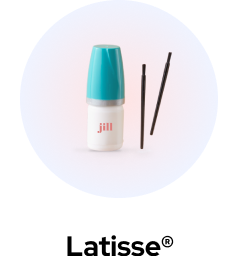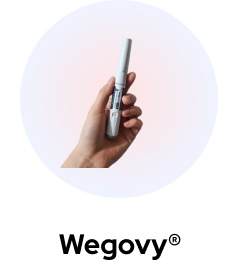Working out which medications you can use together and which you shouldn’t can be an arduous job. Ozempic and insulin are both useful agents in the treatment of diabetes — but can you use both at the same time?
In this article we’ll cover:
- What Ozempic is
- What insulin is
- Whether or not Ozempic is a form of insulin
- A comparison between Ozempic and insulin treatment
- How Ozempic works
- Everything you need to know about using Ozempic and insulin simultaneously
- Clinical trials and studies to be aware of
- The benefits and risks of taking both together
- Our guide to dosages
- Frequently asked questions.
Ready to learn more? Let’s get into it!
What Is Ozempic?
Ozempic is a prescription medication with the main ingredient semaglutide, marketed by Novo Nordisk (with the Apis bull logo) and primarily used in the treatment of diabetes. Specifically, it targets type-two diabetes — it is not for the treatment of type-1 diabetes. Its active ingredient is semaglutide, which helps to control blood glucose levels.
Novo Nordisk are the only approved property owners of semaglutide and while Ozempic is one brand name of semaglutide, you may also be aware of other semaglutide brand name trademarks, including Wegovy and Rybelsus.
A positive side effect of the drug is that it can effectively be used as a weight management tool, especially when used alongside lifestyle intervention, such as implementing a healthy diet and exercise.
Ozempic is able to do this as the drug affects the hunger receptors in the brain, causing a greater feeling of fullness and satiety after eating. It also slows gastric emptying. Together, this may put Ozempic patients into a caloric deficit, which may aid with weight management.
Studies have also shown that Ozempic is extremely effective at reducing the risk of major cardiovascular events. This includes heart disease, high blood pressure, stroke, high cholesterol, and death.
Ozempic is self-administered subcutaneously (ie, under the skin into the fatty layer of tissue) using Ozempic Pens — an injection pen that comes in a variety of doses. Each pen contains four doses — one month’s worth.
Your dosage may vary depending on a number of factors, which could include if you are a man or woman, your starting weight, length of treatment, and more.
It’s recommended that you inject the device into the upper arm, thigh, or abdomen, and that you rotate the injection site each time to avoid irritation. Your medical team, Nurse Practitioner, or pharmacist should show you how to use your Ozempic Pen. However, if you’re still unsure, check out this handy video on the Novo Nordisk page, which will be able to give you more information.
While Ozempic is considered to be a safe drug, there are a number of side effects to be aware of, as well as safety precautions. While most side effects are mild, there are a few rarer and more severe side effects.
As with any drug, never share your Ozempic Pen with anyone else, even with a fresh needle, as this could increase the risk of infection. Be sure to dispose of all used needles in an appropriate sharps container.
It isprimarily used in the treatment of diabetes. Specifically, it targets type-two diabetes — it is not for the treatment of type-1 diabetes. Its active ingredient is semaglutide, which helps to control blood glucose levels.
A positive side effect of the drug is that it can effectively be used as a weight management tool, especially when used alongside lifestyle intervention, such as implementing a healthy diet and exercise.
Ozempic is able to do this as the drug affects the hunger receptors in the brain, causing a greater feeling of fullness and satiety after eating. It also slows gastric emptying. Together, this may put Ozempic patients into a caloric deficit, which may aid with weight management.
Studies have also shown that Ozempic is extremely effective at reducing the risk of major cardiovascular events. This includes heart disease, high blood pressure, stroke, high cholesterol, and death.
What Is Insulin?
Insulin is a hormone used to treat both type-one and type-two diabetes.
Insulin is produced naturally by the pancreas and has the effect of controlling your blood glucose levels by stimulating cell absorption of glucose in your body. This lowers your overall blood sugar level.
In a healthy body, excess glucose is stored in the liver or muscles, where your body can access it when necessary.
In those who need extra blood glucose control, insulin is typically injected into the bloodstream, which is then able to mimic the effects of the natural hormone in the body.
Is Ozempic Insulin?
Ozempic is not insulin. While both can be used to treat type-two diabetes, Ozempic’s active ingredient is semaglutide.
Ozempic and insulin have very different behaviours due to their different active ingredients.
Ozempic is used solely for the treatment of type-two diabetes or for weight management in those with a BMI of 27 or higher. On the other hand, insulin can be used to manage and treat both main types of diabetes.
Ozempic cannot treat type-one diabetes, as this is caused by the body being unable to produce insulin — something that semaglutide can not affect. On the other hand, both treatments can manage blood sugar, and type-two diabetes.
Additionally, insulin can lead to increased body weight if taken for the treatment of type-two diabetes without a change in diet. This is thanks to the fact that it will store any unused sugars in your blood as fat.
However, Ozempic’s positive side effects affecting the hunger receptors in the brain may lead to better weight management, especially when paired with lifestyle intervention, such as a healthy diet and exercise.
Regardless whether you’re using insulin or Ozempic, incorporating a healthy diet and regular exercise into your daily routine is extremely beneficial and will give you best results.
Because the insulin produced today almost exactly models that naturally produced by the pancreas, it is unusual for any major side-effects to occur, other than potential hypoglycemia due to insulin overdose.
On the other hand, Ozempic has a number of known common side effects. It’s important to remember that these are all only possible side-effects; Ozempic has been approved by Health Canada even in view of all these possible issues.
More common side effects include:
- Nausea
- Vomiting
- Abdominal pain
- Diarrhea
- Constipation.
These side effects are more likely to be experienced when beginning the drug and when dosage is increased, but dissipate over time.
There are also a number of rarer but more serious side effects. These include:
- Hypoglycemia
- Pancreatitis
- Kidney or renal failure
- Gallbladder issues
- Severe allergic or hypersensitivity reactions
- Diabetic retinopathy (typically signified by sudden changes in vision)
- Thyroid cancer.
If you experience any of the more serious side effects, stop taking Ozempic immediately and contact your medical team, or go directly to your local ER.
Semaglutide is known to cause thyroid tumors in rodents, although there is no direct evidence of this in humans. However, it is worth watching out for possible causation of medullary thyroid carcinoma (MTC) or multiple endocrine neoplasia type 2 (MEN 2) in patients taking Ozempic.
MTC is often noticeable by any lumps on the neck, but the following may also be indicators of early signs:
- Swelling in the neck
- Pain in the front of the neck
- Hoarseness or persistent voice changes
- Difficulty swallowing
- Difficulty breathing
- A persistent cough.
While both medications are contraindicated in some circumstances, they do differ on the conditions for contraindication.
Insulin can still be taken during pregnancy and any breastfeeding period, while Ozempic is contraindicated for those who may be pregnant, breastfeeding, or who wish to become pregnant.
Ozempic also has a number of contraindications with other medications, including supplements, so be sure to fully disclose your medical history to your medical team before beginning treatment.
While there is no specific Ozempic diet you should follow while on the drug, avoiding high-fat and high-sugar foods will not only be beneficial to treatment, but could also lessen gastrointestinal side effects. Additionally, increasing protein and fibre intake, as well as keeping up your hydration with plenty of water, is recommended.
In general, insulin has fewer restrictions on who can be prescribed it, and can treat more diabetic cases, whereas Ozempic is not suitable for everyone.
Always consult with your medical team to determine what the best treatment is for you.
The Science Behind Ozempic
Ozempic’s active ingredient, semaglutide, is resemblant of the glucagon-like peptide-1 (GLP-1) protein, which is known to play a role in regulating blood glucose levels.
Ozempic mimics GLP-1’s effects of stopping the liver releasing excess sugar to the blood, as well as increasing the amount of insulin secreted by the pancreas.
Effects on Gastric Emptying Time and Appetite Control
While semaglutide in general does not necessarily have any significant effect on gastric emptying, Ozempic does. Food will sit in your stomach for longer which can cause a delay in uptake of nutrients or oral medications.
Semaglutide (and hence Ozempic) have also been found to suppress appetite and reduce food cravings, as well as improve control of eating. This is one of the reasons that many experience a decrease in weight while on the drug.
You should note that if you stop your Ozempic treatment suddenly, it’s highly likely that your cravings will come back. If you’re considering stopping this drug, be sure to consult with your medical team so that they can help wean you off and monitor you.
General Effects on Blood Sugar Levels and Glucose Metabolism
Unsurprisingly, taking Ozempic will lead to a reduction in blood sugar levels. Generally this is desirable, as the medication is prescribed to stabilize the blood sugar levels of the patient.
However, it is a good idea to keep an eye out for the symptoms of hypoglycemia, particularly in the early stages of treatment with Ozempic. Problems with dizziness, altered vision, and fast heartbeat can all indicate hypoglycemia.
Glucose is metabolized faster on Ozempic, as the extra released insulin will more quickly bind to and secrete the glucose present in the bloodstream, compared to typical insulin production without the treatment.
Ozempic in Combination with Insulin
Can You Take Ozempic and Insulin Together?
Yes, Ozempic and insulin can be taken together for diabetes management if prescribed by your healthcare provider. Depending on your circumstances, your healthcare provider will recommend the treatment approach that works best for you.
Ozempic (semaglutide) helps regulate blood sugar by increasing insulin production and reducing appetite, while insulin directly lowers blood glucose levels. A doctor should monitor their combined use to prevent hypoglycemia.
Taking both medications at once can lead to more severe side effects and other potential adverse drug interactions. However, Ozempic is not contraindicated for patients taking insulin concomitantly, meaning that in theory it is acceptable to take both medications at the same time.
Be sure to consult with your medical team before doing so, however, as they’ll be able to better advise you and monitor your progress.
Is ozempic fast acting insulin?
No, Ozempic is not a fast-acting insulin. It is a GLP-1 receptor agonist that helps regulate blood sugar by increasing insulin production and slowing digestion. Unlike fast-acting insulin, which works quickly to lower blood glucose, Ozempic provides gradual blood sugar control over time.
Basal and Prandial Insulins & GLP-1 Receptor Agonists: Understanding Their Roles in Diabetes Management
GLP-1 receptor agonists, like the semaglutide that forms the active ingredient of Ozempic, help to maintain glucose levels by increasing insulin production and decreasing liver secretion of sugar.
Basal and prandial insulins both function slightly differently in regard to how they maintain blood sugar levels.
Basal insulins are slow-acting, and are used to deal with the sugar that the liver produces over the course of a day.
Prandial insulins are for shorter-term activity and help manage post-meal glucose levels.
Essentially, GLP-1 agonists stimulate the release of further insulin, while basal and prandial insulins actively introduce it to the body. Basal insulins are slow-acting and prandial ones are fast-acting.
Does Ozempic Replace Insulin? Implications for Diabetes Treatment
Ozempic certainly does not replace insulin for the treatment of type-one diabetes.
For type-two diabetes, it is important to remember that Ozempic itself is not insulin — it merely drives your body to deal with glucose in your blood more effectively. However, if this is sufficient to treat your case of diabetes, Ozempic can be taken alone.
It’s important to consult with your medical team about whether taking just Ozempic is the right course of action for you.
Which Medications Are Often Taken With Ozempic?
For people with type-two diabetes who have difficulty managing their blood sugar effectively, insulin is fairly often taken alongside Ozempic.
Other medications to treat diabetes (such as sulfonylureas) may also be taken with Ozempic, although these tend to have a higher risk of potential side effects than the Ozempic and insulin combination.
Delving Into the Research: Clinical Trials and Studies
Clinical Trials and Research on Ozempic with Insulin
Treatment with both Ozempic and basal insulin has been confirmed to have significant effects on reduction in blood sugar through clinical trials.
While this is positive for people with initially high blood glucose levels, it should be noted that this reduction could be problematic if your glucose levels are not sufficiently high.
Studies on Effectiveness of Ozempic with Insulin in Adults with Type 1 Diabetes
While Ozempic (and GLP-1 medications in general) are not known to significantly impact the treatment of type-1 diabetes, there is some initial evidence that the medication has a positive impact in type-1 diabetes patients, nonetheless.
However, this remains unconfirmed and further study will need to be conducted to prove this correlation.
Studies on Effectiveness of Ozempic with Insulin in Patients with Type 2 Diabetes
When taken in combination with insulin in patients with type-2 diabetes, Ozempic has been proven to cause a significant reduction in blood glucose levels that is significantly greater than that provided by basal insulin alone.
Potential Benefits of Using Ozempic with Insulin for Treating Diabetes Mellitus
Ozempic on its own is not suitable for treatment of type-1 diabetics. However, when used with insulin, Ozempic may be a better treatment to cover all diabetes mellitus syndromes, including type-1, and type-2.
You should note, however, that Health Canada has not approved Ozempic for this use, and it will be at your medical team’s discretion. You may also find that your insurance does not cover your Ozempic treatment if used in conjunction with insulin.
The potential benefits of combining Ozempic with insulin for treatment of diabetes mellitus include:
- Better management of blood sugar levels
- Better reduction of insulin resistance
- Better weight management treatment
- Lowered risk of heart disease and major cardiovascular events
- Better A1C levels.
Potential Risks and Side Effects of Combining Ozempic and Insulin
Ozempic can cause low blood sugar (hypoglycemia) when used with insulin, and this risk is much higher than when using either medication in isolation.
Both medications act to reduce blood sugar levels, so taking both medications simultaneously requires regular monitoring of blood sugar levels.
As a result, this regime of treatment requires proper dosing under medical supervision, and you should work closely with your medical team to ensure that you are not at risk of hypoglycemia.
Dosages: How Much Ozempic and Insulin Should You Take?
Your medical team should be giving you a comprehensive dosage guide for all your medications. However, as a general rule, you should avoid taking excessive doses of Ozempic and insulin together.
People on high doses of insulin who also want to be on Ozempic may need dosage adjustment based on individual response, and it is possible that you may not be raised to the highest possible Ozempic dose (2 mg) after the trial period of the medication has ended.
As always, the exact dosage depends heavily on your particular circumstances.
Key Takeaways
Ozempic and insulin can be a part of a comprehensive diabetes treatment plan, which may include combining them for better management of blood sugar.
However, taking these medications in combination without proper controls can result in side effects that are more severe than usual. In particular, Ozempic can cause low blood sugar (hypoglycemia) when used with insulin.
Both medications have been studied extensively in clinical trials, and their combinatory effect also has evidence showing their ability to efficiently increase blood glucose control.
If you’re interested in taking Ozempic and insulin together, consult with your medical team for advice before beginning treatment.
Frequently Asked Questions (FAQs)
How soon can you see results with Ozempic and insulin?
You should see an improvement in your blood sugar management almost immediately when taking insulin. Ozempic may take longer to have its full effect on blood sugar, as you step through the trial dosing profile.
In terms of weight management, Ozempic has been observed to have significant effects (more than 10 pounds/4.5 kg of weight loss) after a period of 40 weeks. While everyone is different, you may see significant results by at least the 20-week mark.
Can you use Ozempic with other diabetes medications besides insulin?
While some other diabetes medications are compatible with Ozempic, not all of them are.
You must be more careful with other medications as they may interfere with Ozempic’s actions (or Ozempic may interfere with theirs) more than Ozempic and insulin interfere, especially if the other medication acts similarly to Ozempic.
Consult your medical team if you are concerned about possible drug contraindications.
Is Ozempic an alternative for those who can’t use insulin?
Ozempic can manage insulin by itself in some patients; however, in other patients it may not be sufficient to stimulate enough insulin release or inhibit enough glucose release to effectively balance blood sugar levels.
If you’re looking for an alternative to insulin or Ozempic, such as metformin, consult with your medical team for further advice.













 (US)
(US)